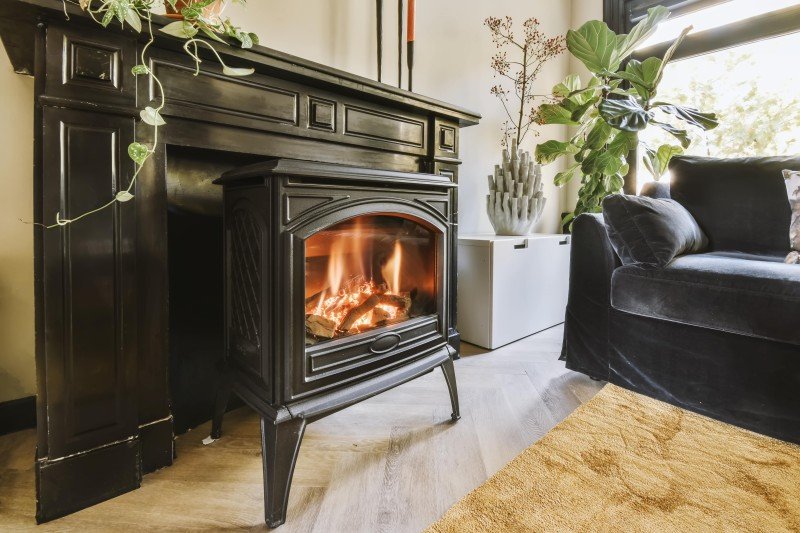Freestanding Stoves for Sale: The Ultimate Guide
Freestanding stoves, likewise referred to as standalone stoves, are a significantly popular choice for house owners seeking to enhance the heating efficiency and aesthetic appeal of their living areas. They are available in a myriad of designs, sizes, and fuel options, supplying flexibility to satisfy the varied requirements of consumers. This short article checks out numerous elements of freestanding stoves, including their advantages, types, and features, in addition to a guide to purchasing the ideal range.
What is a Freestanding Stove?
A freestanding range is a heating appliance that is not developed into a wall or cabinetry. Rather, it stands separately in a room and can be positioned in various locations, making it a versatile heating solution. These stoves can utilize various fuels, such as wood, gas, or pellets, and are designed to offer warmth while improving the atmosphere of a space.
Benefits of Freestanding Stoves
Freestanding stoves are preferred for a number of factors:
- Heating Efficiency: Freestanding stoves can generate significant heat output while being fuel-efficient.
- Aesthetic Appeal: With different designs varying from traditional to contemporary, they can be a centerpiece in any space.
- Setup Flexibility: They can be put in varied places, permitting for simple combination into existing home designs.
- Economical: Many freestanding stoves are more economical to set up compared to integrated systems.
- Heat Distribution: They can successfully disperse heat through the convection procedure, heating up the surrounding location.
Kinds Of Freestanding Stoves
Freestanding stoves been available in various types based on their fuel source, consisting of:
| Type | Description |
|---|---|
| Wood Stoves | Use traditional wood logs for fuel, using a rustic appeal and a distinct atmosphere. |
| Gas Stoves | Run utilizing gas or gas, providing convenient and manageable heating. |
| Pellet Stoves | Use compressed wood pellets as fuel, known for their efficiency and eco-friendliness. |
| Electric Stoves | Use electrical power as a source of power, offered in various designs, often including modern styles. |
Key Features to Consider
When shopping for a freestanding stove, a number of functions need to be taken into consideration:
- Heat Output (BTUs): Consider the size of the location you desire to heat and pick a stove with a proper BTU rating.
- Size and Design: Ensure the stove fits the space and matches the space's design.
- Fuel Type: Decide on the most hassle-free and economical fuel type for your home.
- Efficiency Ratings: Look for the stove's efficiency rankings (like EPA certification for wood stoves) to guarantee you're making an environment-friendly choice.
- Safety Features: Consider designs with security features such as car shut-off, heat resistant glass, or low-clearance alternatives.
Getting a Freestanding Stove
When considering purchasing a freestanding stove, it is vital to evaluate several essential factors to guarantee you invest sensibly:
1. Budget plan
Setting a clear budget is vital when purchasing a freestanding stove. Prices can vary commonly based upon the type, brand, and functions:
- Basic Models: ₤ 800 - ₤ 1,500
- Mid-Range Models: ₤ 1,500 - ₤ 3,000
- High-End Models: ₤ 3,000 - ₤ 6,000+
2. Research Brands and Models
Extensive research can help you discover different alternatives in the market. Some notable brands in the freestanding stove market include:
- Jøtul
- Quadrafire
- Regency
- Lopi
- Harman
3. Consult Reviews
Check out client evaluations and professional ratings online to get insights into the efficiency and reliability of various models.
4. Local Regulations
Check local structure codes and policies concerning stove setup, especially for wood and gas stoves, to ensure compliance.
5. Installation
Think about expert installation, specifically for gas or wood models, as they often need unique ventilation or flue systems.
FAQs About Freestanding Stoves
1. Are freestanding stoves safe to use?
Yes, when correctly set up and kept, freestanding stoves are safe. Nevertheless, it's important to follow the maker's guidelines and local codes.
2. How do I preserve my freestanding range?
Routine upkeep consists of cleaning the flue or chimney, looking for obstructions, and ensuring all components are functioning properly. Yearly inspections by a certified specialist are suggested.
3. Can I use a freestanding stove as a primary heating source?
Yes, numerous house owners use freestanding stoves as primary heating sources, specifically in areas where traditional heating may be limited.
4. Are freestanding click for source -efficient?
Numerous more recent designs are created for high efficiency, using much better heat retention and lower emissions compared to older designs.
5. What is the average life-span of a freestanding range?
With proper maintenance, the typical lifespan of a high-quality freestanding range can be around 15 to 20 years.
Freestanding stoves are a useful and stylish choice for heating homes. By comprehending the numerous types, benefits, and features readily available, house owners can make informed choices that suit their choices and heating needs. Whether selecting a wood, gas, pellet, or electric stove, buying a quality design will supply heat, atmosphere, and complete satisfaction for several years to come.

